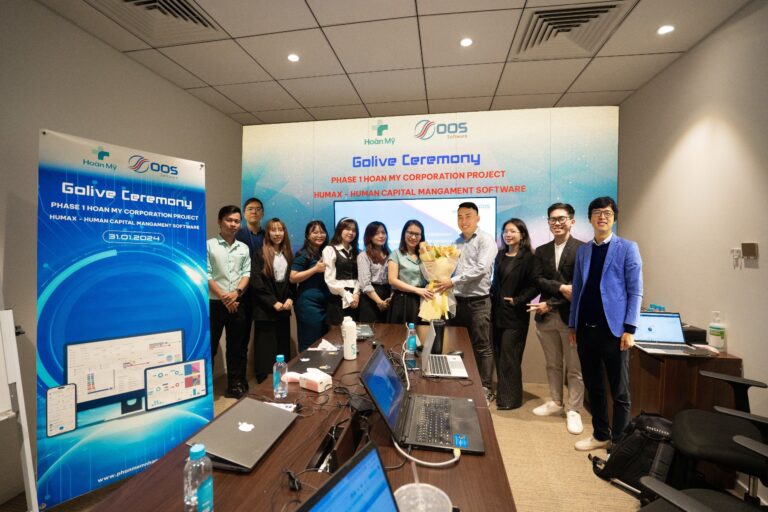Many businesses use performance appraisals as a way to accompany an annual raise. And a lot of HR professionals think that performance reviews are important but sensitive, they can affect interactions and sometimes don't reflect reality because they are subjective. But if you want employees to feel happy and motivated, a manager who knows how to coach, mentor team members, and build a corporate culture that focuses on cultivating and developing talent, then performance management is required.
What is performance management?
You may only think of annual reviews when it comes to performance management, but there's so much more to it. While performance reviews and ratings can certainly play a part, they are not the only way organizations should measure and improve employee performance.
Performance management is the process of continuously monitoring and evaluating to improve work productivity – by setting individual and team goals that align with the strategic goals of the business, planning action plans to achieve set goals, review and evaluate progress, and develop individual knowledge and skills, rewards and recognition programs.
Why is performance management important?
At its core, performance management must help organizations and employees improve their work productivity, find the root cause of the limitation and fix it in a timely and rapid manner. Take a look at what performance management can do for your business:
– At the organizational level, performance management helps leaders measure employee contributions, realize their value, and implement changes to better support them in their roles.
– For employees, it helps them see their own strengths, achieve their goals and grow as employees and as individuals.
In order for the plans and strategies to always be completed according to the goals set out from the beginning, the work to closely follow the progress, and the performance management of each stage are indispensable activities. However, much of performance management has not been done properly. Management through evaluation is often done subjectively, silently from behind and without input from those being evaluated.
Performance management is not just a single meeting or review, but involves the entire work process and should be built as a complete process. Performance management does not end when a manager completes their assessment of an employee.

How to build an effective performance management program?
Frequency: More is usually better
In many cases, it's not enough just to do annual reviews – they're inefficient and inaccurate. Who can remember all the past projects of the year, let alone calculate the details of successes and failures? More than that, managers may have to remember everything their team members did.
The occasional annual performance reviews often try to cram too much content into one sitting; Managers cannot afford to fully pay bonuses, career advice, improvement advice, and possible disciplinary actions to each team member without hundreds of hours of follow-up or research. save them.
If you want effective performance management reviews, just do them more often without waiting for formal reviews. Managers have formal reviews every six months and monthly, weekly subscriptions. That's what employees want, too. According to research, 61% employees prefer to receive feedback when projects are completed or during informal meetings with their managers.
Regular informal performance reviews have a much more positive impact on employee engagement and performance, giving them the time and attention they deserve.
Feedback: Focus on strengths
Giving feedback is central to the performance management process, and it drives employee growth. The way a manager communicates with employees has a direct impact on talent training and retention.
So how does that play out on a one-on-one level?
Manager: Give feedback
When giving feedback, managers should focus on strengths, not weaknesses. Focusing on employee strengths increases employee engagement and in turn makes them more productive, reduces stress, and boosts mental health.
During formal performance reviews, such as annual reviews, managers need clear context and criteria to be able to evaluate employees fairly. It's not just open-ended questions that can produce vague answers that don't offer specific feedback or praise. It is necessary to have a clear set of criteria so that the assessment does not follow a path, based on emotional perception which is often flawed.
Although subjectivity cannot be completely eliminated, it can be limited by doing the following:
– Create evaluation criteria. You will define what performance criteria will be measured against and what employees expect.
– Evidence-based assessment. Performance appraisals are based on actual employee results.
- Simplify questions. Instead of having big, broad questions that open up lengthy, subjective answers, limit subjectivity by asking simple, action-chosen questions rather than feelings.
– Reduce the number of questions. Asking too many questions is boring and tiring and you will get superficial, superficial answers.
– Check results for bias. Double-check your reviews to see if you're still supporting certain employees or biasing an audience.
Employee: Get feedback
How most employees will feel when they receive feedback depends on the workplace culture. In any workplace, there needs to be openness, transparency, and genuine concern for employees' feelings, helping to build trust and goodwill.
So how do you ensure that employees not only trust the feedback they receive, but also act on it? Here are some tips for giving employee actionable feedback:
– Do it immediately. As mentioned before, 61% employees love to receive feedback when projects are completed, which means they like to receive feedback while the experience is still fresh.
– Do it directly. While in-person feedback can be complicated if managed remotely, talking face-to-face makes feedback more believable than an emotionless email. In addition, being face-to-face makes for less misunderstanding, as employees can ask questions or ask for direction at the same time.
– Make it a two-way conversation. Employees should be an active part of the performance improvement conversation. Managers can be the ones to give feedback, but they don't have to answer all the questions. This can be an opportunity for a manager to ask questions and listen to his or her employees.
- Be specific. Dig into the details to see exactly what employees are doing and offer concrete, meaningful help. Even when giving praise, just say “Good job!” will not promote lasting improvements. If you tell someone exactly what they did right, you are also telling them how to repeat success.

Goal setting: Develop employees to grow the organization
Setting individual performance goals is important in helping your organization improve as well as supporting the growth of each employee. If you help your employees set and achieve goals, they'll feel more engaged by focusing on developing their strengths, and you'll have a more productive force.
Here are some best practices for setting performance goals and using them to help employees feel more engaged and motivated to improve their performance:
Employees should establish focused goals that are aligned with the action plan. Big goals are often impressive, but they can be quickly abandoned because they are often vague or too broad or overwhelming to realistically achieve. Instead, employees should get to the core of what they want to improve and break down the big goal into actionable steps.
Managers should help employees set goals. Manager involvement can help employees feel heard and supported. Managers can check progress, give instructions and direct employees to related issues, other mentors in the organization, etc.
Managers should help employees align their personal goals with organizational goals. Employees will be more effective and feel more engaged if they see how their efforts contribute to the great success of the organization.
Goals must be flexible. Reality and circumstances change, and so do goals. Managers and employees should work together to figure out whether goals are still manageable, realistic, and relevant.
HR should provide professional and professional development opportunities. There's a lot that managers can do to mentor and coach employees, but the human resources department can implement broader training programs that benefit larger groups of employees.
Track progress: keep a record of performance, goals and feedback
Better performance management means more people are involved in the process:
Employees need to think more about how they want to grow in the organization.
– Managers need to check in with employees more often and mentor them.
– HR needs to report to management on how the entire organization is performing while monitoring individual efforts combined.
But without some kind of system in place to keep track of all this information, you quickly run into the same problem as if you just did an annual review: failing to remember what employees have done and how effective they are. performance will not improve.
You must track overall performance, preferably through performance management software, which makes it easy to aggregate overall performance while giving managers and employees options for tracking goals and personal feedback.
Appropriate rewards and recognition
Performance management is about helping employees develop their skills in the workplace and beyond that, rewards and recognition help employees feel valued when their progress or performance is acknowledged, while encouraging employees to achieve certain goals.
Rewards should not be tied to performance appraisals. Make sure the manager knows how to separate compensation conversations from performance conversations. Performance appraisals tied to compensation can create a culture of blame, increase systemic hierarchy, weaken collectivity, discourage frank talk, and are prone to politicization.
Reward your employees for meeting their performance goals. A well-thought-out, fair reward program can be an effective way to motivate employees. But when you're trying to build a performance management process that's honest, effective, and actually helps employees improve, stop talking about pay decisions during the review process.
It's perfectly fine to praise employees during performance reviews – as long as it's not simply used to defuse criticism. When done right, recognition helps keep employees engaged and satisfied with their jobs.
Proper recognition helps employees see meaning and purpose in their work. It is advisable to actively build a recognition program based on the core values of your business. Unaligned with your organization's values, an accreditation program can quickly evolve in a more random and arbitrary manner than a program specifically designed to grow your people and your organization together. .
Offering a complete performance management process, Humax is a platform to help businesses develop human resources for organizational development:
– Monitor and manage overall performance with a system of flexible evaluation methods built according to industry characteristics: KPI evaluation criteria, OKR method, ASK, ..
– Evaluation log (Feedback continue) with daily and weekly cycle for regular feedback, timely help instead of waiting for the official evaluation period by month or year.
– Decentralize assessment, create a clear flow, two-way interactive staff self-assessment or assessment management.
– Centralized and unified information system, storing information about performance, goals and feedback
- Awarding and recognition policy, derived from the goal of evaluating and finding good personnel, creating motivation to stick with the organization.























